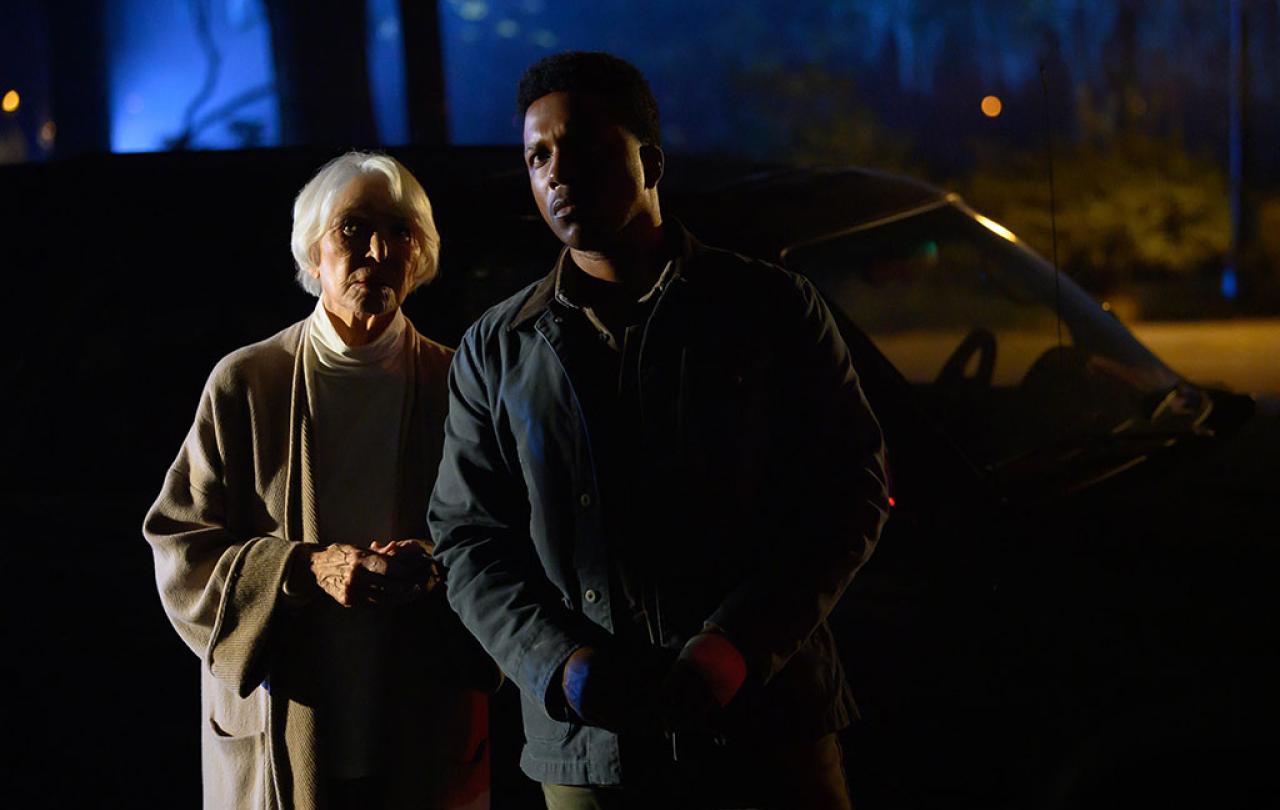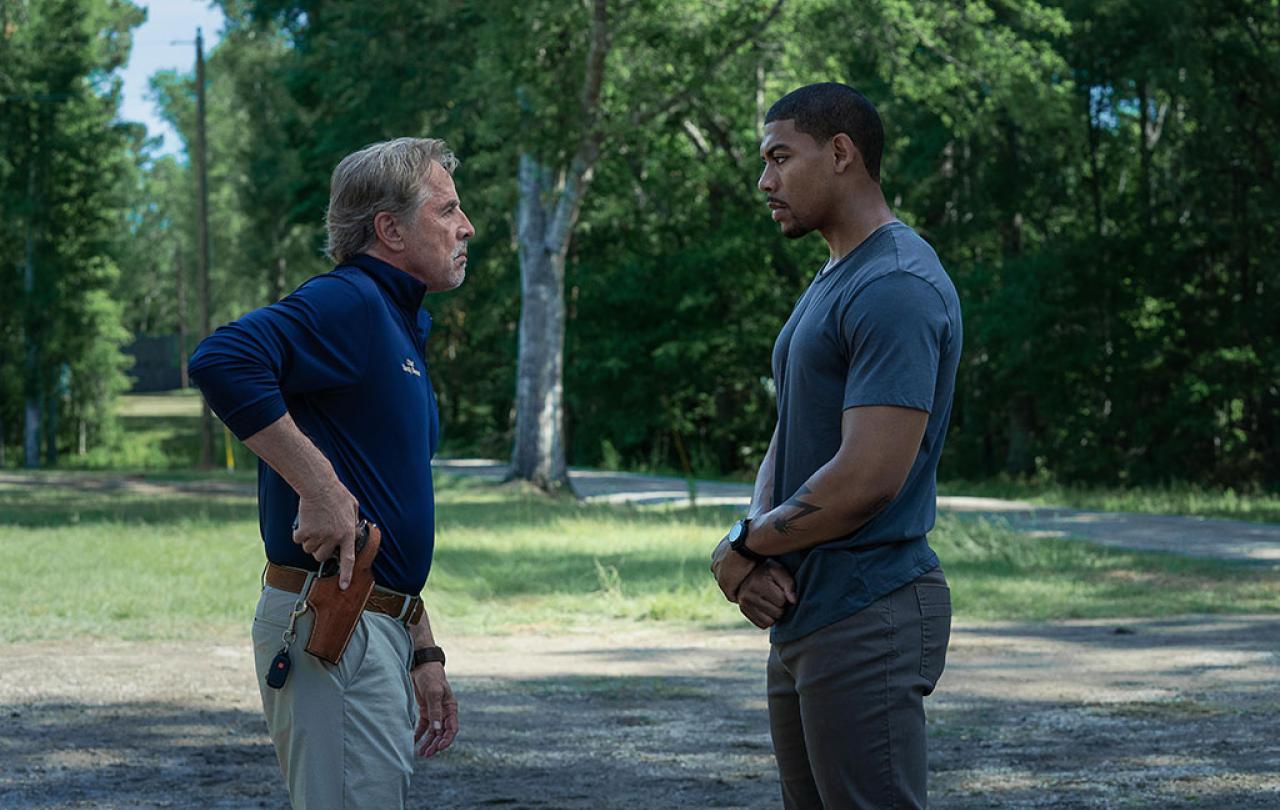
That’s it. I have nothing more to say about the film in this review - The Exorcist: Believer. If you want a proper, knowledgeable, definitive derogatory diatribe against this dreadful waste of celluloid, may I suggest you watch this review by Mark Kermode. The good Doctor loves the original Exorcist more than any other reviewer I’m aware of and is the expert witness you need if you want to understand the absolute abomination this ‘film’ is (and, more importantly, is not!). I don’t have the energy. However, I do have the Church’s authority to speak on matters of faith and doctrine, so instead of my usual theology-smuggle at the end of a review, can we just dive right into it?
SPOILERS AHEAD – trust me, it doesn’t matter…
You can’t comment on an exorcism film without reference to the original – The Exorcist. Believer is David Gordon Green making a something of a sequel to the original; this went well with his first Halloween film, and then turned horrifyingly, stupidly bad with the second and third outings (and such treatment is promised for the Exorcist franchise). The Exorcist is a club sandwich of thematic wonder. William Peter Blatty was both a tremendously talented writer and also a thoughtful, intelligent, and committed Roman Catholic. When he wrote the novel of The Exorcist, he created a popular (slightly bloated) theological masterpiece. Adapting the script for William Friedkin to direct, he took the core themes and trimmed all the fat. The result is gorgeously lean, muscular, agile film that moves at a clip and doesn’t allow you a moment to forget the searing questions of faith, and doubt, and family, and failure, and sin.
Believer raises no such questions. If it has any sort of theme or message it seems to be this. The demonic is there not to sow random chaos, horror, pain and destruction (a good understanding of ‘evil’ as ‘nothing’, very much in keeping with a conception of evil formalised in Western theology by St Augustine almost a few millennia ago, which Blatty presents with perfection). It is there to offer people an ironic monkey’s-paw-esque bargain to reveal their own weakness and hypocrisy…yeh? Believer isn’t just terrible film, and not just a terrible sequel to a remarkable film; it is the lazy desecration of a cinematic theological legacy.
The original gave a gorgeous visual commentary on the human spirit remaining resilient in the face of evil as the absolute negation of ‘what is’.
To name the overarching source of my incandescence, it is this question: What is the demonic doing in this film? What is it achieving? The original Exorcist is clear – Fr Merrin (the eponymous exorcist) explains that the possession of a child is intended as random, purely nihilistic, awful chaos that grinds down the resolve of righteous. It has no point, no substance – it is genuine ‘evil’, nothingness collapsing in on itself. In Believer the demon seems to be wanting to make a social commentary on parenting…maybe? At the start of the film the voodoo-blessed mother is caught in a building collapse after a Haitian earthquake, and as she lies dying in a makeshift hospital the father is presented with a terrible choice: the surgeon can only save one or the other, mother or baby. SPOILER – he may have a daughter, but he didn’t choose her. There’s another girl who is something of a free spirit with parents who are very light touch. One father didn’t want his daughter, the other doesn’t seem to be too bothered about his daughter having structure…you know? Parents, children, the sins of the father…you know?
The great climax has the demon(s) presenting the assembled non-exorcists with a choice. Fathers – choose your daughter and she’ll live, first come, first served. One father recognises the immorality, the pointless and annihilating ‘evil’, of letting a girl die, the other doesn’t. He’s been pretty much a non-entity throughout the film, has no real understanding of what is going on, is about as psychologically traumatised as it is possible to be, and is presented with the opportunity to save his daughter…of course he makes the wrong choice…because this is a ‘clever film’…The demon reveals the girl who was chosen will die. TWIST. Didn’t see that coming – admittedly this film is so stupid I didn’t see anything coming. Why? Why let one girl live? Why is this demon – this figure of total and destructive evil – teaching the people a lesson about self-sacrifice and never being willing to sacrifice an innocent? Is the demon making an important point? WHAT IS GOING ON!? Well, the mistakes of Heretic are being repeated, but this is a point for the cognoscenti…
The original gave a gorgeous visual commentary on the human spirit remaining resilient in the face of evil as the absolute negation of ‘what is’; it ends with a broken man finding his faith and his redemption in a Christ-like act of self-sacrifice (Fr Karras – the junior exorcist – takes the demon into himself and commits suicide). There is, in this final act, a moving and absolute statement on the indomitability of creation (and humanity as the pinnacle of creation) as that which God has willed into being and continues to will ‘to be’. We are here! We are loved! We are to be redeemed! We cannot be seduced by the lie that decay and dissolution and destruction and nothingness is our ultimate destiny. Believer has people stumbling by accident to a conclusion that says nothing about God, or the devil, or heaven, or hell, or faith, or doubt, or family, OR GOOD AND EVIL, or anything serious.
I despise this film. I pray to God the other two films in the proposed trilogy do not get made. They probably will…maybe that’s not the end of the world. Maybe the inevitable sequels will, in the very fact of their being filmed and released, be a better exposition of the reality of banal and destructive evil, which seeks to find the beauty of ‘what is’ and tarnish it, than their actual stories. Maybe…
Star rating? At the sight of this film the stars themselves hid…





